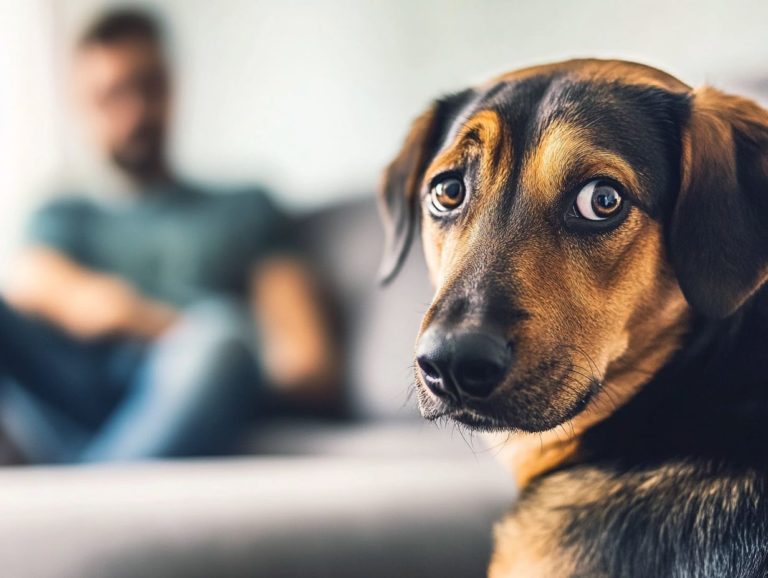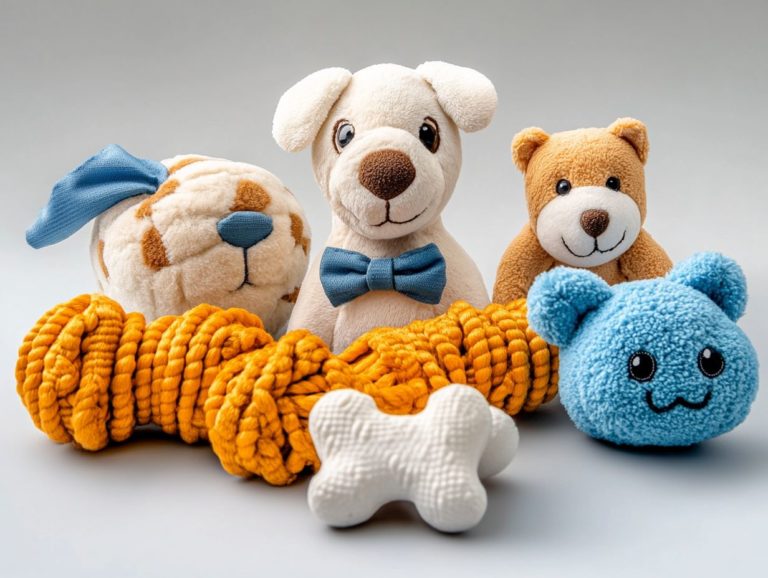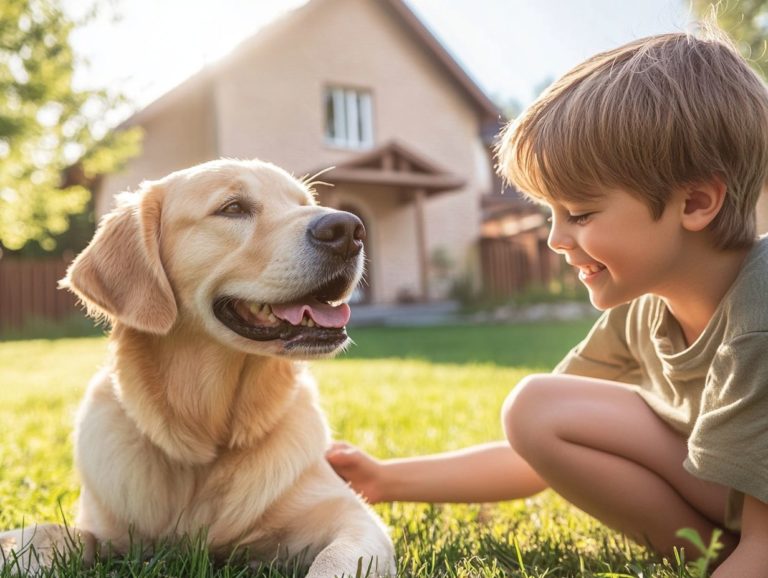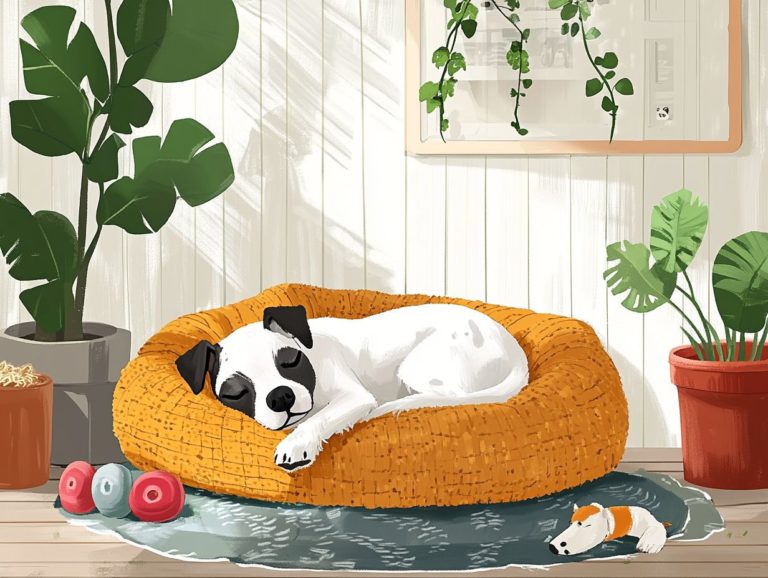How to Help Your Anxious Pet Adjust to Vet Visits
Caring for your pet goes beyond just meeting basic needs. It also includes nurturing their emotional well-being.
Regular vet visits are vital for your dog’s health! They can prevent minor issues from turning into serious problems. For many pets, these excursions can induce dog anxiety. Recognizing the signs and triggers of your pet’s anxiety is key to providing the support they need.
This article delves into the significance of complete pet care, offering valuable insights on how to prepare for vet visits, soothe your furry companion during appointments, and create a comfortable environment at home.
By the end, you’ll be equipped with effective strategies to help your anxious pet feel secure and cherished.
Contents
- Key Takeaways:
- The Importance of Proper Pet Care
- Understanding Your Pet’s Anxiety
- Preparing for the Vet Visit
- During the Vet Visit
- After the Vet Visit
- Long-term Strategies for Reducing Anxiety
- Frequently Asked Questions
- What can I do to help my anxious pet adjust to vet visits?
- How can I prepare my pet for a vet visit if they have had a negative experience in the past?
- Are there any natural remedies I can use to help my pet stay calm during a vet visit?
- Should I inform my vet about my pet’s anxiety before their visit?
- Can I stay with my pet during their vet visit if they are anxious?
- Is there anything else I can do to help my pet adjust to vet visits?
Key Takeaways:
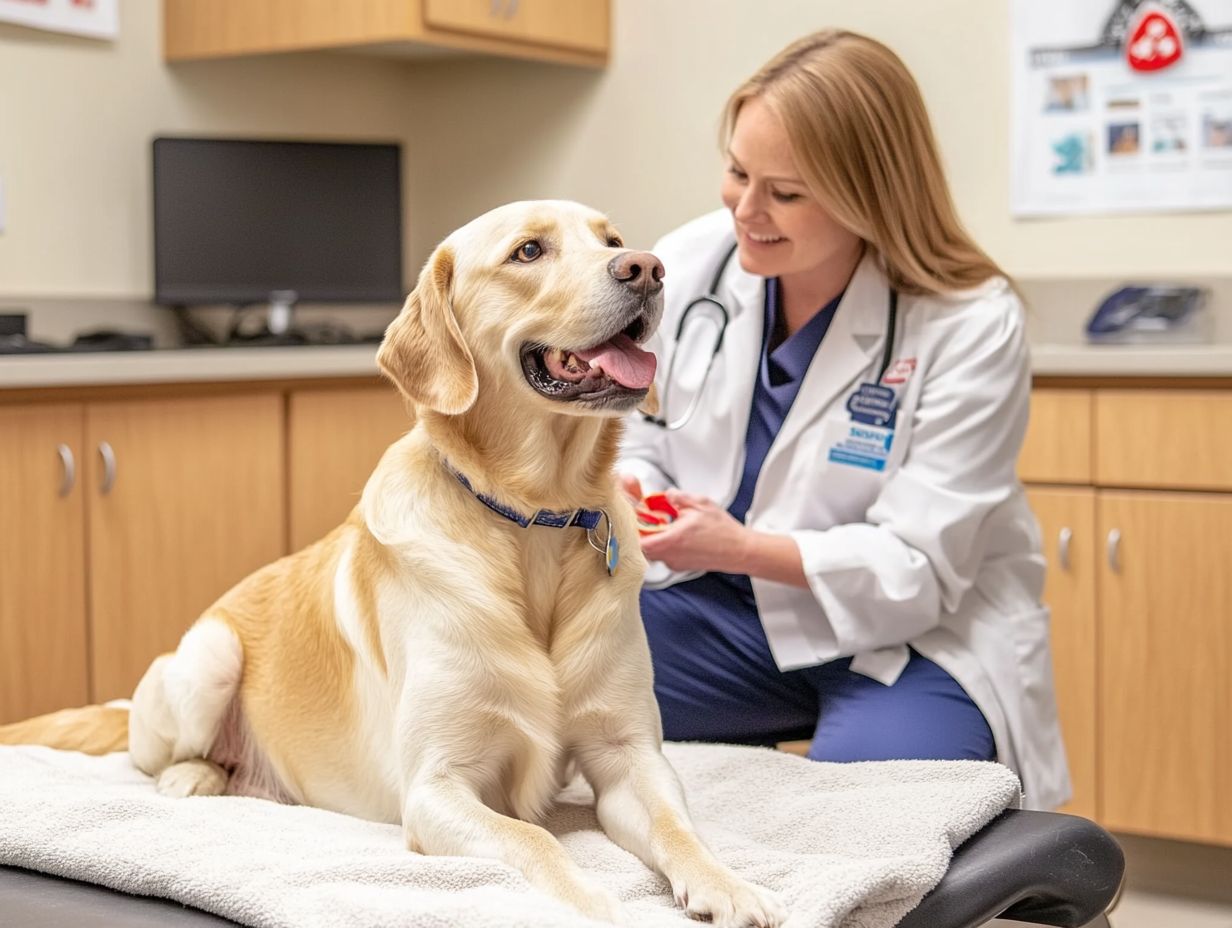
- Regular vet visits are essential for maintaining your pet’s health and well-being, and can prevent potential health issues from worsening.
- Understanding your pet’s anxiety is crucial in helping them adjust to vet visits. Recognizing signs and triggers can aid in preparing for and supporting them during the visit.
- Before, during, and after the vet visit, taking steps to create a calm and positive experience can make a huge difference in helping your anxious pet adjust and cope with future visits.
The Importance of Proper Pet Care
Proper pet care is crucial for ensuring the overall well-being of dogs, and regular vet visits are central to this process. These visits allow you to monitor your dog’s health, address any concerns related to anxiety, and provide tailored veterinary care that meets their unique needs.
By maintaining a consistent schedule of check-ups, you can help your dog develop a positive association with the vet, making them feel more comfortable and secure in the consultation room. This proactive approach not only significantly contributes to their emotional health but also deepens the bond you share with your pet.
Why Regular Vet Visits are Essential
Regular vet visits are crucial for maintaining your dog’s health. They provide the veterinary team with the opportunity to monitor your pet’s overall well-being, prevent diseases, and offer vital treatment options tailored specifically to their needs.
Neglecting these visits can put your dog at serious health risks, including undiagnosed conditions that could have been easily treated if caught early. For example, a simple dental cleaning can prevent gum disease, which might later escalate into more severe issues like heart problems.
The stress of an unexpected health crisis can weigh heavily on you, creating anxiety for both you and your furry companion. To ease this burden, consider techniques such as familiarizing your dog with the vet’s office beforehand or using positive reinforcement. Additionally, you can explore how to help a rescue pet with anxiety to encourage calmness during exams and create a more comfortable atmosphere.
Regular check-ups not only enhance your dog s health but also foster a trusting relationship with the veterinary team. This makes future visits less daunting for both you and your beloved pet.
Understanding Your Pet’s Anxiety
Understanding your pet’s anxiety is essential for offering effective support during stressful moments. By recognizing the signs and triggers of dog anxiety, you enable yourself to employ appropriate handling techniques, fostering a calm demeanor in your furry companion.
Signs and Triggers of Anxiety in Pets
Recognizing the signs and triggers of anxiety in your pets is crucial for effective fear management. Anxious dogs often display various stress signals, such as panting, pacing, or even trying to escape.
These behaviors can present themselves in a multitude of ways, like excessive barking meant to convey discomfort or compulsive hiding when they feel overwhelmed. Common triggers can include loud noises, such as thunderstorms or fireworks, shifts in their daily routines, and trips to the vet each capable of significantly affecting a dog s emotional state.
By staying attuned to these specific stressors, you can create a calming environment tailored to your pet’s needs. Employing methods like gradual desensitization slowly introducing your pet to the vet environment to reduce anxiety or designating safe spaces can greatly enhance your pet s emotional well-being and stability.
Preparing for the Vet Visit
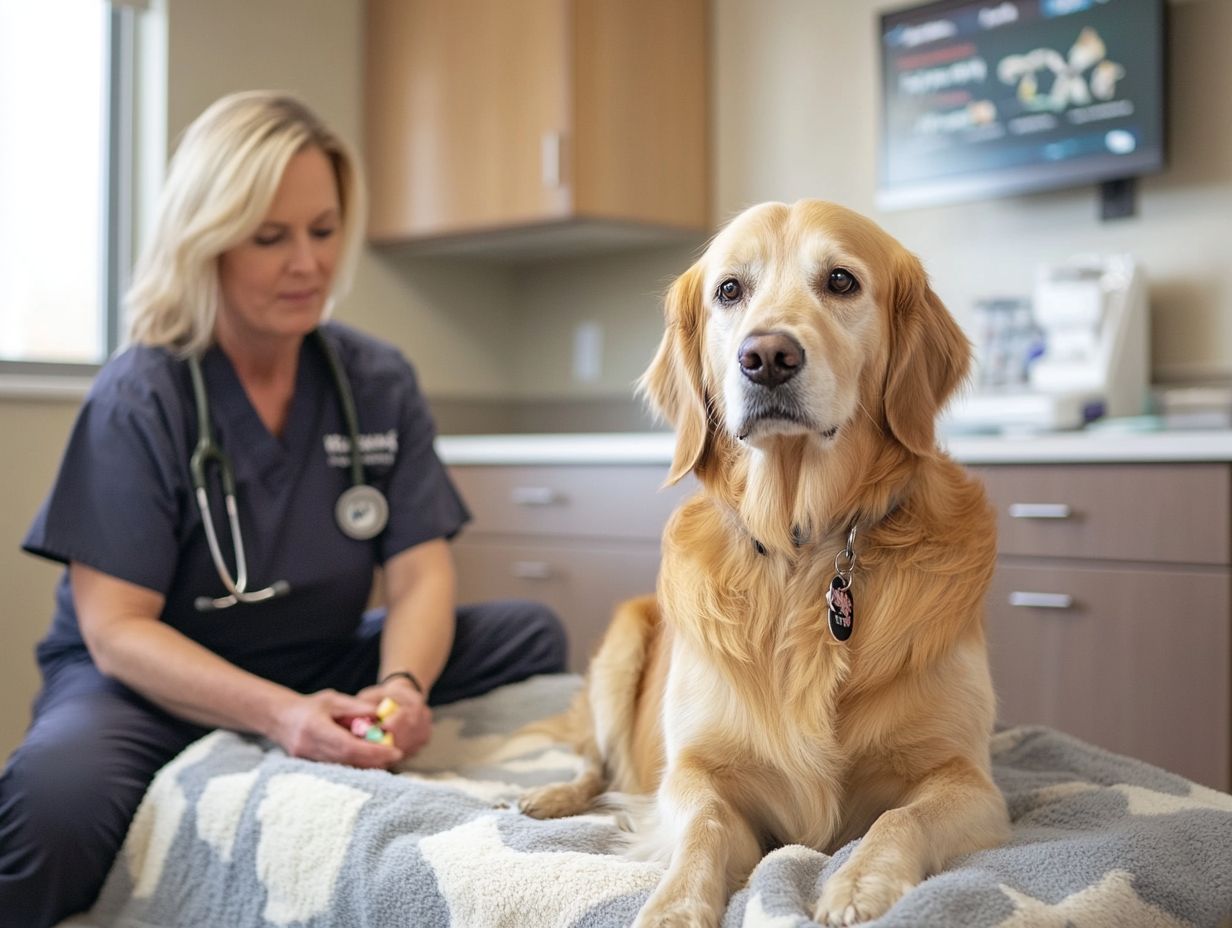
Preparing for a vet visit necessitates careful planning to alleviate stress and anxiety. Understanding the role of veterinary professionals in pet anxiety can make the visit easier and create a positive experience for both you and your dog.
Steps to Take Before the Appointment
Taking proactive steps before a vet appointment can significantly reduce your dog’s anxiety, helping them feel secure and calm during the visit. It’s also beneficial to learn how to support your anxious pet after training.
- Introduce familiar blankets or toys into the carrier. This creates a sense of safety through recognizable scents.
- Practice handling exercises at home, like gently touching their paws and ears. This will help them acclimate to being handled by unfamiliar hands.
- Create a calm environment free from loud noises and distractions. Your reassuring attitude plays a vital role; your dog picks up on your emotions. By exuding confidence and warmth, you improve their comfort and make the appointment more positive.
During the Vet Visit
Your support during a vet visit is vital. It helps manage your dog’s anxiety and creates a positive experience. This involves effective communication with the veterinary staff and veterinary advice in managing pet anxiety, along with getting them used to new situations to ensure your pet feels secure and at ease.
How to Support Your Pet During the Visit
Supporting your pet during their vet visit is essential for ensuring they feel safe and secure. You can achieve this through calming techniques and preparing for a pet anxiety consultation, creating positive associations in the waiting area and consultation room.
- Incorporate calming treats into their routine before the visit. These special goodies offer positive reinforcement, encouraging calm behavior.
- Pay attention to their body language to gauge their comfort level. Respond quickly to any signs of distress with simple gestures like gentle petting or speaking softly.
- Prepare in advance by gradually desensitizing them to the vet s environment. This transforms a stressful encounter into a pleasant outing.
After the Vet Visit
It’s exciting to take part in your dog’s recovery with follow-up care! Following a vet visit, implement follow-up care for the dog’s recovery and emotional well-being. This ongoing attention supports treatment options and reinforces the positive associations your dog formed during the appointment.
Follow-up Care and Tips for a Smooth Recovery
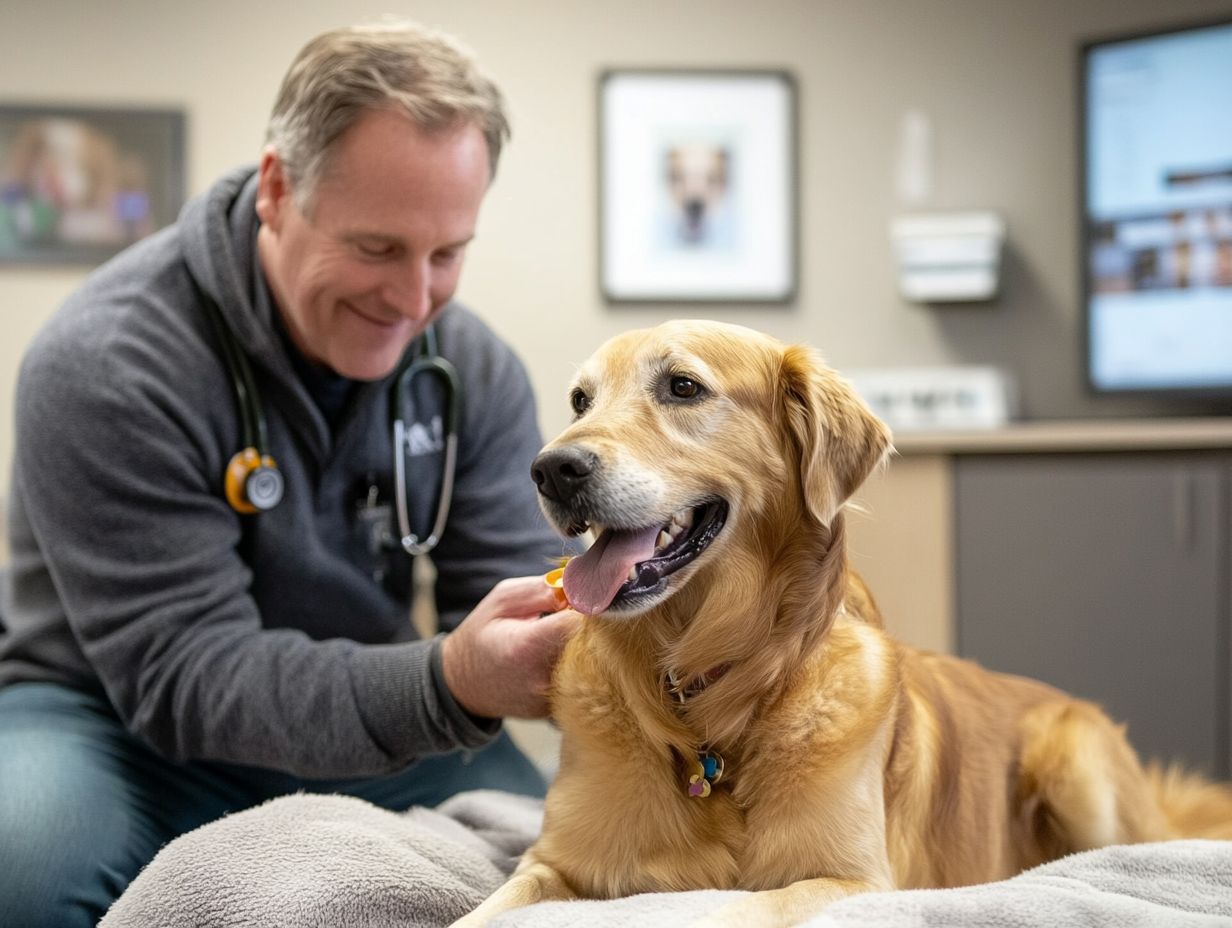
Implementing effective follow-up care strategies is essential for ensuring a smooth recovery for your dog after a vet visit. This not only reinforces positive experiences but also fosters emotional well-being.
- Prioritize medication adherence. Don’t wait! Administer prescribed treatments right away to support your dog’s recovery.
- Monitor for any signs of stress or discomfort in your dog. These signals can indicate a need for adjustments in the care plan.
- Provide consistent support to yourself. By maintaining a calm demeanor, you create a soothing environment that significantly impacts your dog’s emotional comfort.
Long-term Strategies for Reducing Anxiety
Long-term strategies for reducing anxiety in dogs revolve around cultivating a serene environment within your home and employing training exercises. These approaches enhance your dog’s emotional well-being and build resilience, allowing them to navigate their world with greater confidence and calmness.
Creating a Calming Environment at Home
Creating a calming environment at home is vital for your dog’s emotional well-being. It reduces anxiety and helps them feel secure and comfortable in their surroundings.
To achieve this, think about setting up designated spaces where your furry friend can unwind. A cozy nook adorned with their favorite blankets or a plush dog bed can provide that much-needed sense of safety. Familiar items, such as beloved toys or even a worn-out shirt from their favorite human, can offer added comfort and reassurance.
Incorporating calming aids, like essential oil diffusers, gentle music, or a well-timed routine, can significantly enhance your dog’s experience. These thoughtful touches promote relaxation and help diminish any stress that may arise throughout the day.
Frequently Asked Questions
What can I do to help my anxious pet adjust to vet visits?
Several things can help your anxious pet adjust to vet visits. Start by gradually introducing your pet to the vet’s office and staff, such as bringing them in for short visits or just to say hello. Use calming techniques like soothing music or a calming pheromone spray to help your pet relax. Additionally, learn how to help your anxious pet feel safe through practice and positive reinforcement to help your pet associate the vet’s office with good experiences.
How can I prepare my pet for a vet visit if they have had a negative experience in the past?
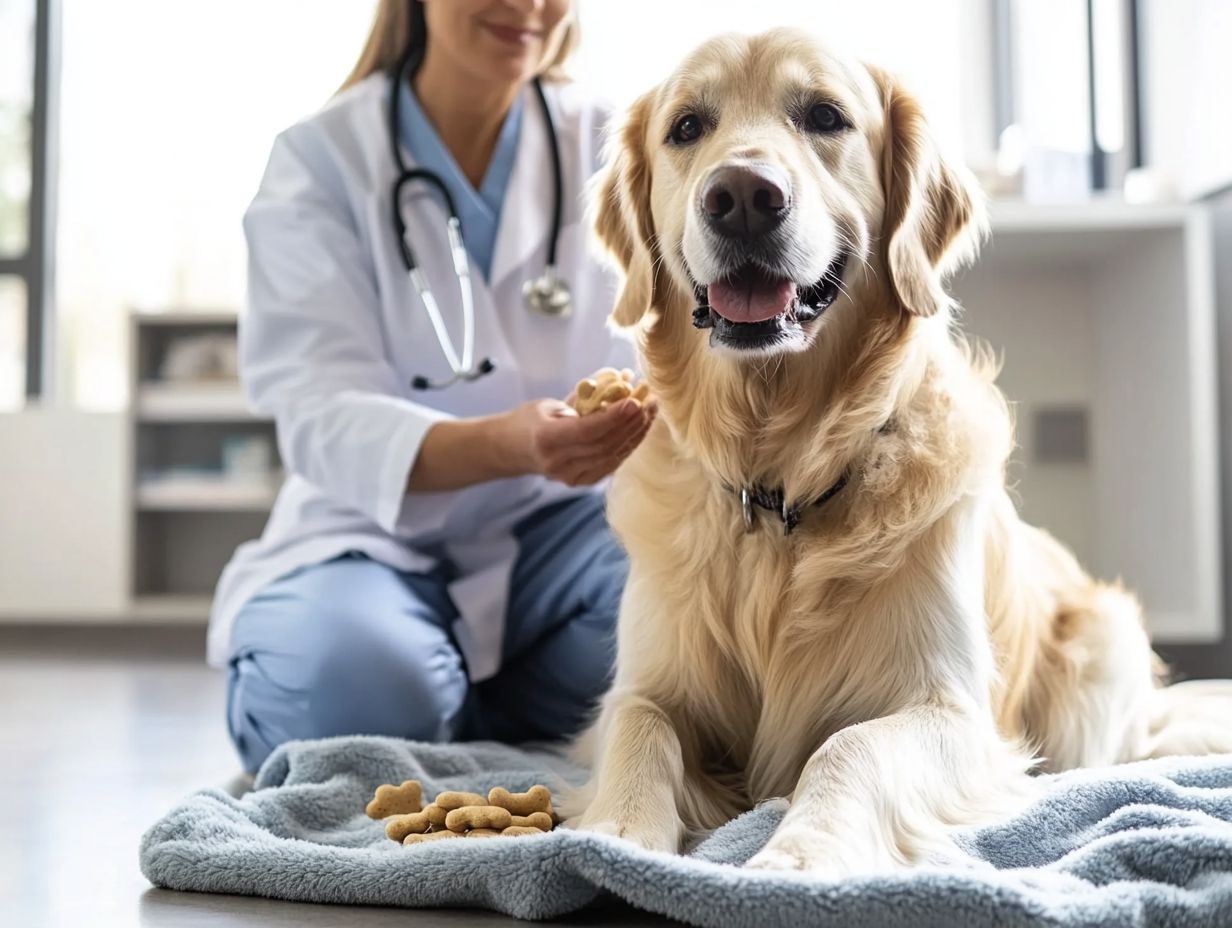
If your pet has had a negative experience at the vet, it’s important to address their fears and anxieties before their next visit. Talk to your vet about your pet’s previous experience and any specific triggers that may cause them stress. Additionally, consider seeking help for your anxious pet by using desensitization techniques at home, like handling your pet in the same way the vet would, to help them become more comfortable.
Are there any natural remedies I can use to help my pet stay calm during a vet visit?
Yes, several natural remedies can help your pet stay calm during a vet visit. Herbal supplements, like valerian root or chamomile, have calming effects on pets. Additionally, you can refer to this guide on how to recognize and address anxiety in pets and use essential oils, such as lavender or frankincense, to help reduce anxiety and promote relaxation.
Should I inform my vet about my pet’s anxiety before their visit?
Let your vet know about your pet’s anxiety! This way, they can take necessary precautions and make accommodations to help your pet feel more comfortable. For specific strategies, consider learning how to help a pet with travel anxiety, which might include scheduling a longer appointment, using a separate waiting area for anxious pets, or alternative techniques like distraction or sedation during the exam.
Can I stay with my pet during their vet visit if they are anxious?
In most cases, it’s perfectly acceptable and even encouraged for you to stay with your pet during their vet visit if they are anxious. This can provide a sense of security and comfort for your pet, helping to soothe them and keep them calm throughout the visit. However, if your pet becomes overly aggressive or poses a safety risk, the vet may ask you to step out for everyone’s safety.
Is there anything else I can do to help my pet adjust to vet visits?
In addition to the tips mentioned, here are a few other things you can do to help your pet adjust to vet visits. Create a positive association with the vet’s office by bringing treats or toys. Providing plenty of exercise and mental stimulation before the visit can help tire out your pet. For those looking for more insights, consider reading how to help an anxious pet adjust to new environments. If your pet’s anxiety is severe or affects their quality of life, seek help from a professional animal behaviorist.
Start preparing your anxious pet today and make vet visits a breeze!

